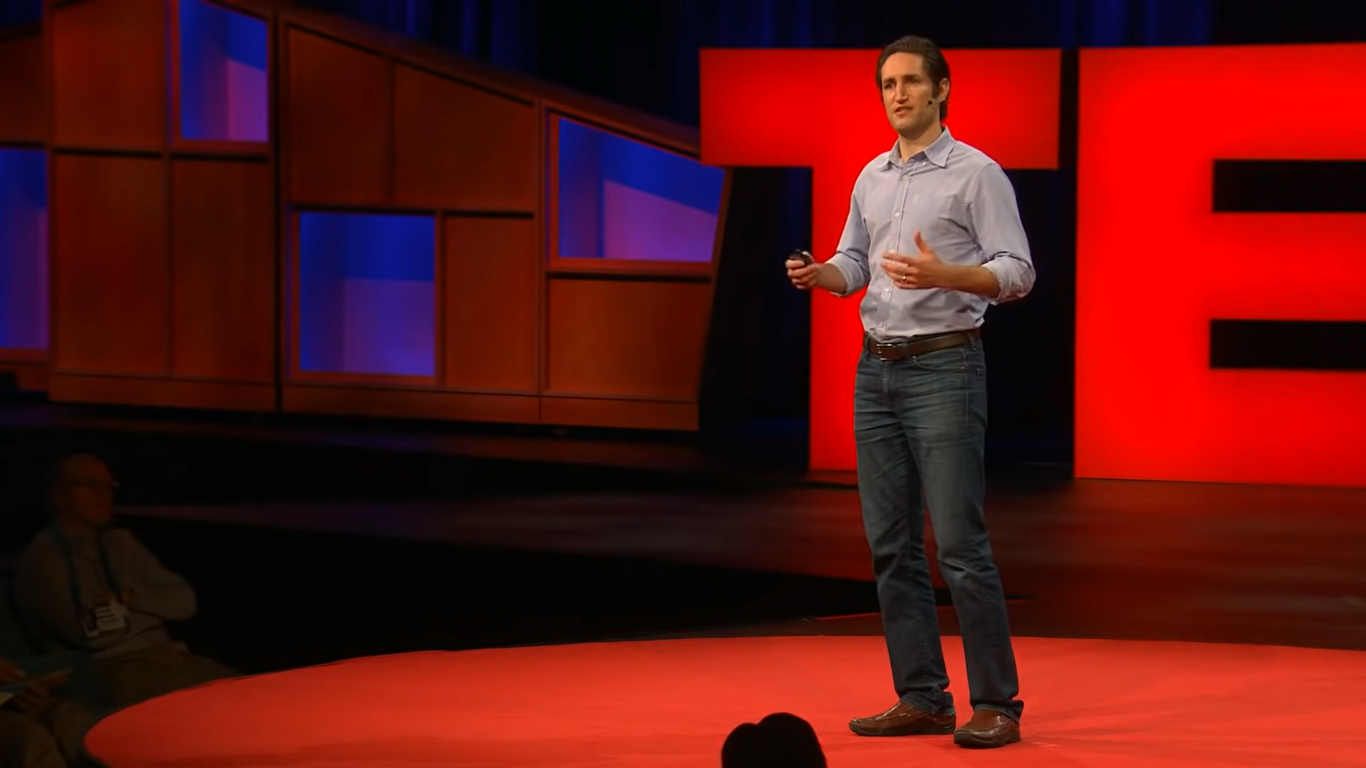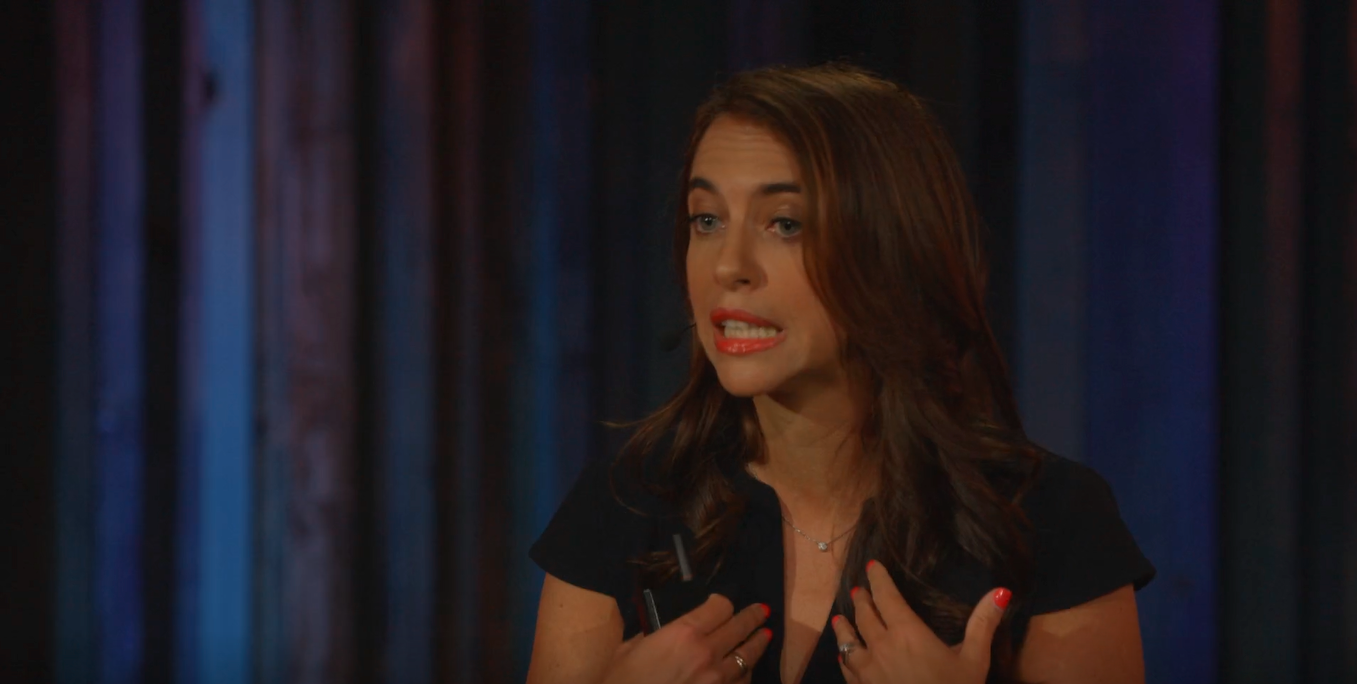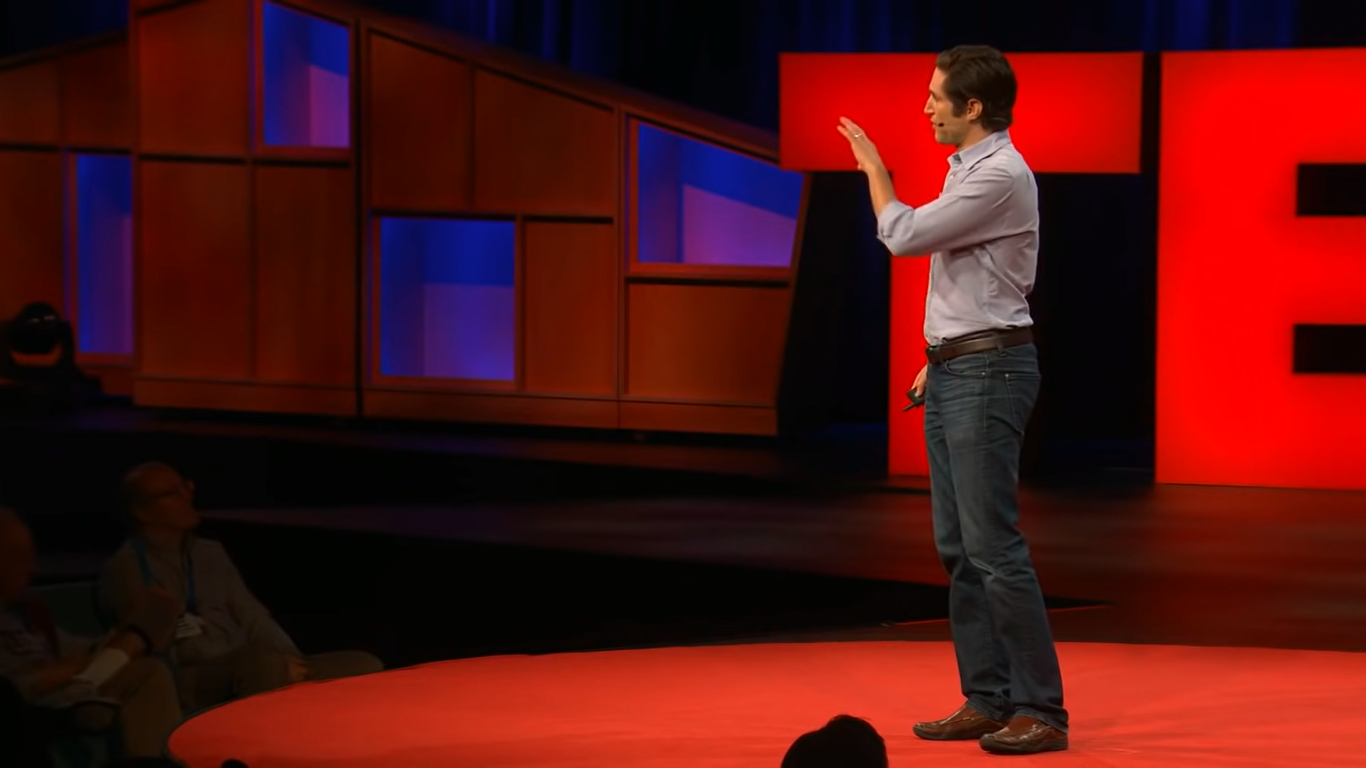
Hand gestures in business meetings
TED Talks はリスニングスキル向上だけでなく、新しいことを学べる最適な方法です。ビジネスや英語テストにも有効な、トークを印象付けたり説得力を持たせるジェスチャーにも注目し活用してみましょう。
TED talks are a great way of practising your listening skills or learning something new about specific topics. You can also use them to observe the ways that English speakers use hand gestures to add emphasis or refer to something while they are speaking. This is important, not only to improve the way you present to clients but also when taking speaking tests, such as the G.B.C. or I.E.L.T.S. Below we talk about 3 different types of common hand gestures you can start to use now.
Outward gestures
Firstly, we have what we will call “outward” gestures. The image below demonstrates that the speaker moves his hands (or one hand) away from his body at chest height as he is speaking in order to emphasise an important point or idea.

As you can see from the transcript below, he uses this particular type of gesture to emphasise the following words and concepts (highlighted below in bold) which are significant to his presentation.
Now, this is a widespread practice, but I think what's really interesting is when you find exceptions to this rule, when you find cases of businesses or people in businesses who don't use their own products. Turns out there's one industry where this happens in a common way, in a pretty regular way, and that is the screen-based tech industry.
You can use these outward gestures to draw the audience's attention to key words or concepts which you would like to highlight. Outward gestures are also associated with truth and honesty.
Inward Gestures
Secondly, we have inward gestures, which we can use when referring to something related to ourselves or our opinion. This is done by bringing your hands toward yourself (again, at chest height) in order to emphasise that you are speaking about your personal opinion or something which is particularly relevant to you. These gestures are often used in conjunction with phrases such as “in my opinion,” “I'm of the belief that...” or even when using the pronoun “my.”

For instance, in the first minute of this TED talk entitled "Siri, Alexa, Google ... what comes next?" the speaker uses this type of gesture twice when she says the following sentence:
What is thrilling is the prospect of having a companion that would cater specifically to my needs and requests. Just imagine, it could do things, like using my heart rate to tweak my Starbucks order to reduce caffeine.
It is not necessary to use this strategy every time you refer to yourself, but in a speaking test you will be asked to express your opinion and this is a straightforward way of adding more emphasis when you do it.
Reference gestures
Finally, we have reference gestures. In the image below you can see that the speaker moves his hand away from his body in order to reference something specific. This might be information on a screen or an important graph in a presentation.
Here, the speaker is referring to an important graph which will be displayed for the audience on a screen. Using a reference gesture, he guides the audience's attention to the image which he is going to refer to and then to a number which is significant to his analysis.
Now, what I'm going to do is show you how much of that space is taken up by screens across time. In 2007, this much.
When using reference gestures, make it a quick and direct gesture to draw the audience's attention to the visual which you are referring to. Additionally, be careful not to point directly at people, which can seem rude.
Putting these gestures into practice
Here are two ways you can practise these types of gestures by yourself or in class with your teacher:
- Watch one of the above TED talks (or any TED talk which you find interesting) and take note of which gestures are used. Practice copying specific sentences along with the gestures.
- Write two or three sentences about a particular topic—it could even be an answer to a practice test question. Think of which important words or concepts and how you could use outward, inward or reference gestures. Your teacher can give you feedback as to how to position your arms and hands, as well as how to position your camera so that next time you take an exam, your examiner will see how well you have incorporated this new skill.
If using TED talks are hard for you then check out our blog post on How to use TED talks to learn English.
